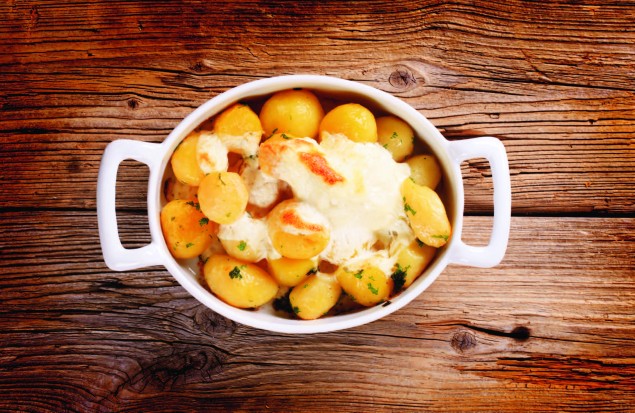Conquering Potato Fatigue
Q: I’m so tired of potatoes for every side dish on Pesach. What are other options if I don’t eat gebrokts?
A: As a self-professed potato lover, I feel that a meal is just not complete without potatoes. But I know not everyone enjoys these tubers to such an extent. Thankfully, we have a world full of interesting vegetables that can serve as stand-ins for the potato on Pesach.
Use this as an opportunity to expand your palate. You may, however, need to venture beyond your corner grocery. Check local farmers’ markets or Asian grocery stores if you have trouble finding some of these less-common vegetables.
Eight Days of Potato Substitutes
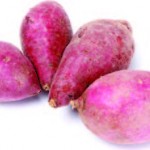 Day 1: Purple potatoes. I know they’re technically still potatoes, but they’re so much more exciting! Brighten your yom tov plates with a little color by roasting or mashing a few purple potatoes, which are sweeter than white potatoes. Their bright hue is courtesy of the antioxidant anthocyanin (also found in blueberries, cherries and eggplant), which may offer cancer-fighting and heart-protective benefits. Daily consumption of purple potatoes may also help lower blood pressure by a few percentage points, similar to oatmeal (which won’t be gracing your Pesach table).
Day 1: Purple potatoes. I know they’re technically still potatoes, but they’re so much more exciting! Brighten your yom tov plates with a little color by roasting or mashing a few purple potatoes, which are sweeter than white potatoes. Their bright hue is courtesy of the antioxidant anthocyanin (also found in blueberries, cherries and eggplant), which may offer cancer-fighting and heart-protective benefits. Daily consumption of purple potatoes may also help lower blood pressure by a few percentage points, similar to oatmeal (which won’t be gracing your Pesach table).
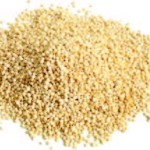 Day 2: Quinoa. Some people think this pseudo-cereal (quinoa is not a grain) is similar to rice, but it’s more closely related to beets and spinach. Naturally gluten-free and high in protein, quinoa is popular year-round, but especially on Pesach for people seeking potato alternatives. Following extensive research and on-site investigation by OU Kosher personnel at quinoa-growing areas, OU Kosher announced that this year, for the first time, it is recommending quinoa for Passover when processed with special OU Passover supervision and bearing the OU-P symbol.
Day 2: Quinoa. Some people think this pseudo-cereal (quinoa is not a grain) is similar to rice, but it’s more closely related to beets and spinach. Naturally gluten-free and high in protein, quinoa is popular year-round, but especially on Pesach for people seeking potato alternatives. Following extensive research and on-site investigation by OU Kosher personnel at quinoa-growing areas, OU Kosher announced that this year, for the first time, it is recommending quinoa for Passover when processed with special OU Passover supervision and bearing the OU-P symbol.
Quinoa is great cooked simply with some chicken or vegetable broth or dressed up with added vegetables, dried fruit or a protein source like chicken, meat or cheese. For a nuttier flavor, toast it before cooking.
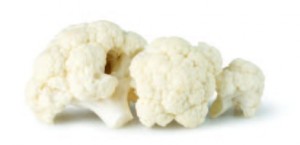 Day 3: Cauliflower. For those on a low-carb diet, cauliflower is a great potato fake out. It’s the same color and, when mashed, has a creamy texture similar to potatoes, with a fraction of the calories and carbohydrates. It’s also delicious roasted or pureed into a soup or simply added to a salad or served with a dip. Plus, it’s loaded with nutrients and phytochemicals that can protect against cancer.
Day 3: Cauliflower. For those on a low-carb diet, cauliflower is a great potato fake out. It’s the same color and, when mashed, has a creamy texture similar to potatoes, with a fraction of the calories and carbohydrates. It’s also delicious roasted or pureed into a soup or simply added to a salad or served with a dip. Plus, it’s loaded with nutrients and phytochemicals that can protect against cancer.
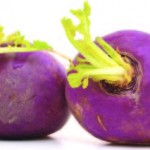 Day 4: Rutabaga. This vegetable is surprisingly potato-like, with less than half the calories and carbs. It tastes kind of like a cross between a potato and a parsnip (although officially it’s a cross between a turnip and a cabbage), with a little bit of sweetness.
Day 4: Rutabaga. This vegetable is surprisingly potato-like, with less than half the calories and carbs. It tastes kind of like a cross between a potato and a parsnip (although officially it’s a cross between a turnip and a cabbage), with a little bit of sweetness.
As easy to peel and cut as a white potato, rutabaga is quite good mashed, like potatoes, or you can bake or roast it as well.
 Day 5: Squash. You should still be able to get winter squash, a rich source of carotenoids (plant pigments that also act as antioxidants) over Pesach. My favorite is butternut squash because it’s sweeter than the others—reminiscent of sweet potatoes—and it cooks very quickly. I love roasted butternut squash with olive oil, salt and pepper. Acorn squash is another good option, albeit less sweet. Bake it in halves for an attractive presentation.
Day 5: Squash. You should still be able to get winter squash, a rich source of carotenoids (plant pigments that also act as antioxidants) over Pesach. My favorite is butternut squash because it’s sweeter than the others—reminiscent of sweet potatoes—and it cooks very quickly. I love roasted butternut squash with olive oil, salt and pepper. Acorn squash is another good option, albeit less sweet. Bake it in halves for an attractive presentation.
Zucchini is another versatile squash, available all year. It is delicious in an easy sauté with onions and other veggies, or if you’re feeling more ambitious, stuffed or even cut into thin strips to create a lasagna.
Day 6: Celeriac. If you like celery but hate the fibrous strands that get stuck in your teeth, celeriac is for you. Sometimes called celery root, it has that mild celery taste with a texture that’s like a potato. Its nutrient profile is also more similar to celery than a potato (that is, it’s low in calories and carbs). Peel and slice it thinly to add raw to salads, boil or roast it or drop it into your Pesach cholent instead of potatoes.
 Day 7: Sunchokes. This knobby tuber of the sunflower plant might look like ginger root, but the resemblance stops there. As their name suggests, they taste similar to an artichoke, which is why they’re also called Jerusalem artichokes. (Incidentally, they have nothing to do with Jerusalem; the moniker is thought to be a perversion of the Italian word for sunflower, girasole.)
Day 7: Sunchokes. This knobby tuber of the sunflower plant might look like ginger root, but the resemblance stops there. As their name suggests, they taste similar to an artichoke, which is why they’re also called Jerusalem artichokes. (Incidentally, they have nothing to do with Jerusalem; the moniker is thought to be a perversion of the Italian word for sunflower, girasole.)
While Sunchokes are part of the sunflower plant, they should not be confused with sunflower seeds, which are, in fact, kitniyot. Sunchokes’ claim to fame is their high content of inulin, a starch which our bodies cannot digest and is instead broken down by bacteria in the gut. Inulin is thought to improve immunity and promote gut health.
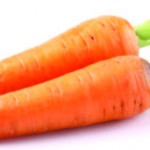 Day 8: Carrots. Try to think beyond your boring baby carrots and see this vegetable for the abundant strengths it brings to the table—it’s starchy, sweet, bright orange, packed with nutrients and inexpensive to boot. There are so many ways to prepare carrots: glazed, broiled, roasted, sautéed, boiled, braised, even shredded and fried like a latke. You can also pair carrots with another vegetable—perhaps parsnips or leeks or one of the other vegetables listed here.
Day 8: Carrots. Try to think beyond your boring baby carrots and see this vegetable for the abundant strengths it brings to the table—it’s starchy, sweet, bright orange, packed with nutrients and inexpensive to boot. There are so many ways to prepare carrots: glazed, broiled, roasted, sautéed, boiled, braised, even shredded and fried like a latke. You can also pair carrots with another vegetable—perhaps parsnips or leeks or one of the other vegetables listed here.
Shira Isenberg is a registered dietitian and writer in Nashville, Tennessee. She has a master’s degree in public health nutrition from Hunter College in New York.

